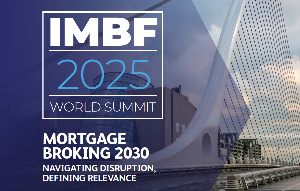
Infometrics expects it to be hovering at about the 4% range. “Relief for mortgage holders will not be massive,” says Gareth Kiernan, Infometrics chief forecaster.
He says the peak in mortgage rates and surge in net migration have raised talk that house prices are close to bottoming out.
“Although inflationary pressures are moderating throughout the economy after two years of costs and prices running out of control, the Reserve Bank will be content to let the effects of its previous interest rate rises continue to dampen demand over the next 12 months,” Kiernan says.
“Faster population growth is likely to put a floor under house prices, but we still see housing affordability and high mortgage rates being a key constraint on the amount buyers can pay for properties throughout the next two years.”
In addition, Kiernan says the pick-up in population growth coincides with rapid expansion of housing stock, as record high dwelling consent numbers in the past two years translate into newly completed homes. As a result, Infometrics sees house price growth averaging just 2.2% a year between 2024 and 2028.
Masking the extent of the economy’s weakness over the next 12 months will be strong population growth, Kiernan says.
The labour market remains tight and wage inflation is still elevated, but the influx of foreign workers over the past nine months is rapidly alleviating the most critical labour shortages previously caused by the border closures.
Kiernan says in terms of employment, businesses have been in catch-up mode in the first half of this year, filling roles that had been vacant for an extended period.
However, Infometrics expects this pent-up demand for additional workers to peter out in coming months, job growth to slip below population growth, and wage inflation to moderate.
Annual net migration is set to peak at a record high of more than 93,000 in the second half of this year, but ease to a more sustainable level of below 40,000pa by the end of next year as the unemployment rate pushes up to about 5%.
“With fewer job ads indicating weaker hiring intentions, our central view is for a “fast up, fast down” track for migration, but the current momentum in visa and arrival numbers poses a risk that migration heads higher and stays there for longer than we are forecasting,” Kiernan says.
Against this backdrop, he says further OCR increases appear unlikely, particularly given that average debt-servicing costs will continue to rise well into next year as existing fixed mortgages come up for renewal.
Infometrics expects the economy to flirt with negative growth between now and the end of 2024 which, at first glance, is a mild downturn compared with the Global Financial Crisis.
“However, a 2.2% decline in per-capita GDP in the year to June 2024 represents a much more significant contraction. This result demonstrates the reversal of households’ fortunes as the economy has slowed,” he says.
“The effects on businesses of each of their customers spending less will only be mitigated by an increase in customer numbers associated with strong net migration.”
Kiernan says be it a continued slowdown, a double-dip recession, or any other description, the economy is still going to look and feel weaker throughout the rest of this year and into the next.
“That’s the price we’re paying to get inflation under control and put the New Zealand economy on a more sustainable path.” At least he says, the country is now seeing the effects of the tightening in monetary conditions coming through.



Comments
No comments yet.
Sign In to add your comment